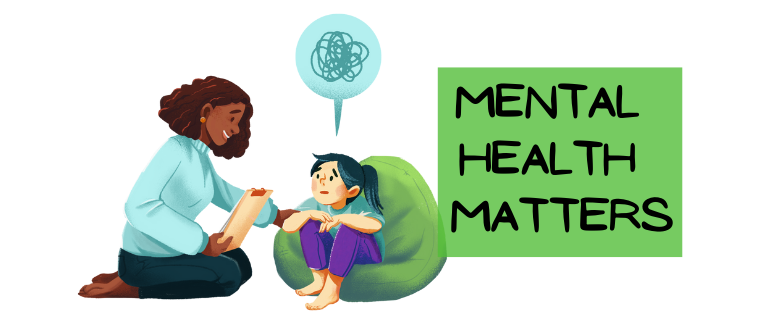Although Mental Health Awareness Month wrapped up at the end of May, it is still important to call attention to how it affects adolescents and young adults in the United States. In 2020, the National Alliance on Mental Illness (NAMI) reported:
- 1 in 6 adolescents (aged 12-17) experienced a major depressive episode
- 3 million adolescents (aged 12-17) had serious thoughts of suicide
- 1 in 3 young adults (aged 18-25) experienced a mental illness
- 8 million young adults (aged 18-25) had serious thoughts of suicide
With the increase of mental health episodes among people 25 and younger, the American Academy of Pediatrics (AAP) issued a National Emergency in Child and Adolescent Mental Health in October 2021.
Childhood mental health concerns and suicide has risen steadily since 2010. The AAP’s national emergency says, “This worsening crisis in child and adolescent mental health is inextricably tied to the stress brought on by COVID-19 and the ongoing struggle for racial justice and represents an acceleration of trends observed prior to 2020.” In 2018, suicide was the second leading cause of death for youth ages 10-24.
The COVID-19 Pandemic exacerbated the mental health crisis among young people due to a feeling of isolation. School was taking place through a computer screen, there were no after school activities or sports, and many kids and teens didn’t see their friends in-person for months.
The pandemic has also taken away family members due to Covid deaths.
“More than 140,000 children in the United States lost a primary and/or secondary caregiver, with youth of color disproportionately impacted,” according to the APA National Emergency. “We are caring for young people with soaring rates of depression, anxiety, trauma, loneliness, and suicidality that will have lasting impacts on them, their families, and their communities.”
The APA is calling on policymakers at all levels of government and advocates to advocate for a variety of items, including an increase of federal funding for mental health screening, strengthen emerging efforts to reduce the risk of suicide through prevention programs, and advancing polices that ensure compliance with and enforcement of mental health parity laws.
Although much work needs done to advocate for better mental health care for youth, Harvard Health Publishing (Harvard Medical School) says that parents can help by:
- Creating rituals of communication and safe spaces to talk
- Making sure your child has downtime
- Encouraging healthy media habits
- Making sure your child is getting enough sleep – and some exercise
- Keeping in touch with teachers, coaches, and other adults in your child’s life
- Trying to make your home a judgement-free safe haven
- Paying attention to your own mental health
Be sure to pay attention to signs in your child that may be abnormal for them.
Though still facing a heavy stigma, mental health is just as important as physical health and needs treated that way.
Sources:
https://www.nami.org/NAMI/media/NAMI-Media/Infographics/NAMI_2020MH_ByTheNumbers_Youth-r.pdf
https://www.aap.org/en/advocacy/child-and-adolescent-healthy-mental-development/aap-aacap-cha-declaration-of-a-national-emergency-in-child-and-adolescent-mental-health/
https://www.health.harvard.edu/blog/the-mental-health-crisis-among-children-and-teens-how-parents-can-help-202203082700

